Face-Off: Ninja Gaiden 3: Razor's Edge on Wii U
Atonement.
It's very rare that we come across a console conversion that radically improves the experience to the point where swathes of text in the original review - not to mention the score - no longer seem relevant, but that's exactly the state of affairs we encounter with the release of this new "Razor's Edge" edition of Ninja Gaiden 3.
Simon Parkin quite rightly scored the original game at a risible 4/10, citing the dumbed down gameplay mechanics, button-bashing auto-combos and the emphasis on QTEs - a monotonous combination that amounted to a complete betrayal of the series' focus on tough-but-fair gameplay and intricate, technical combat. The review also pointed out the complete lack of skill progression, the pared-down weaponry and the omission of combo counters amongst other classic Ninja Gaiden staples.
Also receiving paragraphs of criticism was a particular scene found at the beginning of the game where the player has no choice but to cut down an unarmed, surrendering enemy opponent driven to begging for his life after witnessing Ryu Hayabusa annihilate his colleagues. It's the most blatant, heavy-handed example in the game of an attempt to make the player consider whether Hayabusa is a hero or a mass-murderer, but actually serves no other purpose than to make the protoganist look like an arsehole mere minutes into the action while highlighting just how little control you actually have on the narrative. In true "No Russian" style, nothing you do alters the inevitability of the scene.
In Razor's Edge on Wii U, almost all of this criticism, along with plenty more from die-hard series veterans, is addressed to one degree or another. The core gameplay may superficially look similar at first glance, but just a few moments of play reveals a sequel that returns to its more illustrious roots. While locations, opponents and bosses are mostly unchanged, combat has been enormously revised to the point where we suspect that Team Ninja drew upon its existing work with Ninja Gaiden Sigma 2 and transplanted across many of the key fundamentals.
"This is much more than just a port - Razor's Edge on Wii U sees the return of the technical combat system brutally excised from Ninja Gaiden 3 on PS3 and Xbox 360."

The newly restored technical combat system has much in common with the last game, skills progression is back via a reworking of the Karma system, a choice of weapons is available throughout the game and the difficulty level is restored to a level that fans of the series should appreciate, retaining a beginner 'hero' mode for more casual gamers. Bloody dismemberment and brutal decapitations are also back on the menu, and - yes - bosses have a life-bar now.
But that's not all: the hated QTEs are mostly gone and the faintly ludicrous Kunai climbing system has been tweaked. In the process, the game is vastly improved and the character of Hayabusa himself is less compromised than once he was in the older, nerfed edition of the game. The notion of our highly trained combat master continually being "surprised" by goons jumping out at him (triggering a pointless QTE) along with the even more bizarre sight of a master ninja falling off a wall are now removed completely. And as for the enemy begging for his life? Team Ninja sidesteps that one adeptly simply by removing the offending sequence in its entirety.
Digital Foundry articles typically concentrate on the technical aspects because the whole nature of cross-platform development is all about running the same games on multiple consoles - visual effects and performance are typically the main points of differentiation. Hopefully we've emphasised strongly enough that Razor's Edge is a different beast: an enormous u-turn and sterling fan service in equal measure. That's not to say that there isn't a technical story to tell though, and in time-honoured fashion we'll begin with head-to-head videos and a triple-format comparison gallery.
"While gameplay has been overhauled, the core assets are essentially a match for the existing versions of the game, with mild tweaks applied."
Alternative comparison:
For all the sweeping changes implemented in the gameplay, it's clear that the technological underpinnings of Ninja Gaiden 3: Razor's Edge share much in common with the older code, with the Wii U version seemingly based on the superior PlayStation 3 version of the game. Cut-scenes render out at 720p on all platforms, with many of them pared down to 30FPS in order to implement higher-quality models and effects work. Here we find the Xbox 360 game utilising FXAA, while both PlayStation 3 and Wii U use 2x multi-sampling anti-aliasing.
Moving in-game, we see the application of both dynamic resolution and anti-aliasing. If the GPU horsepower is available to maintain 60 frames per second, we see the same 720p and 2x MSAA/FXAA combination. However, once the action hots up, anti-aliasing is completely removed from all versions of the game in order to maintain performance, while resolution adjusts on the fly seemingly according to load, scaling down to a minimum of 1024x576. We say "seemingly" because taking snapshots from any given point in the game throws up a number of anomalies: scenes that all consoles should easily be able to render can see the scaled-down resolution effect still in play. It may well be that the changes take time to kick in.
We've put together a quick rundown of image quality observations based on our video and screenshot galleries, but it's worth pointing out that most of the changes appear to be based on Team Ninja's wish to "remix" the game. Textures and light-sources have been tweaked or swapped out in places, colour balance has been radically altered elsewhere. In the same way that enemy spawn patterns and boss confrontations are adjusted in many places, we think that this represents the developers' wish to re-balance and improve the game as opposed to highlighting any technical differences between the consoles.






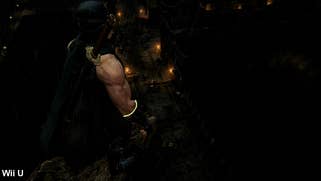
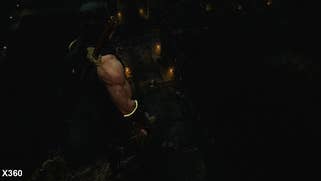
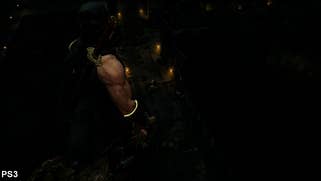
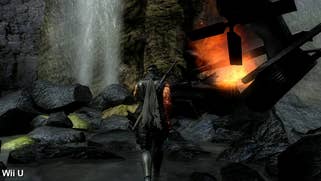

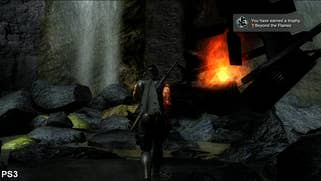

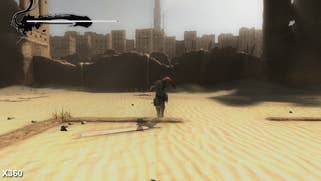
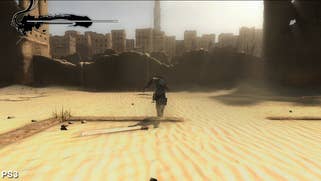

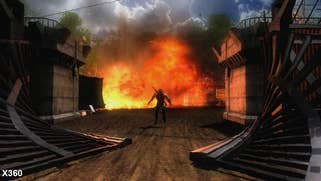
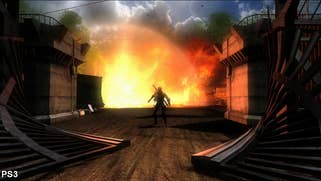
Ninja Gaiden 3 - performance analysis
We do have to wonder to what extent the dynamic resolution and anti-aliasing systems are actually effective, owing to the monstrously variable frame-rates we see in Ninja Gaiden 3 on all systems. Clearly Team Ninja simply cannot budget to the 16.67ms rendering window available to ensure a clean 60Hz update, resulting in frame-rate that regularly plunges lower, often accompanied by an unwelcome, muggy feeling in the controls - a state of affairs that has not been addressed in the game's transition onto Wii U. However, the general consensus from many gamers appears to be that Team Ninja has resolved the frame-rate and tearing issues that plagued the PS3/Xbox 360 versions of the game.
An analysis of cut-scenes and like-for-like video offers up a few interesting observations. Firstly, there is no clear winner in terms of performance when rendering similar scenes - all versions can take the lead at any given point, but the main takeaways are that screen-tear is indeed completely absent from the Wii U game, sporadically present on PlayStation 3 and a major issue on the Xbox 360 version. Clearly, when frame-rate is dropped down to 30FPS for selected cut-scenes, none of the consoles have any issues hitting the target.
With no real performance conclusions, we turn to the gameplay comparison in order to find answers. Here we confirm that Xbox 360's tearing issues really impact on the visual quality of the game, and that while significantly reduced, it's still something of an issue on PlayStation 3 too. Wii U continues to run with v-sync engaged, and for the first half of our comparison it manages to do so while keeping pace with the other versions in terms of raw frame-rate too. However, on later stages we find the Wii U version taking a significant hit to frame-rate for reasons unknown - especially on the helicopter boss battle.
"V-sync eliminates the tearing that blighted the Xbox 360 and PS3 versions, but overall frame-rates are clearly a mixed bag on the all versions of the game."
Our overall conclusion here is that no version of Ninja Gaiden 3 has any kind of sustainable advantage over the other. At times, Xbox 360 pulls ahead but always at the expense of image consistency - screen-tear is a very real problem. Wii U occasionally has a frame-rate advantage over its competitors, but can crash significantly, and we definitely felt the difference in the controls. On the plus side, however, the complete elimination of screen-tear is a definite boon. Midway between the two we find the PlayStation 3 version.
If there is no outright performance winner here, it's worth pointing out again that the multitude of changes Team Ninja has made to the core gameplay more than make up for it. While the videos show a game that superficially looks pretty much identical on all three console platforms, it's only the Wii U rendition that actually feels like a proper Ninja Gaiden title worthy of the name. While you may feel as though you're wading through treacle when the frame-rate really tanks, the exact same phenomenon is evident on the previously preferred PlayStation 3 version too - we went back to check just to make sure.
And it's not just in terms of gameplay where Wii U commands an advantage either.
The Wii U difference
These additional advantages aren't exactly legion, but they're well worth covering nonetheless. The original DLC is included as standard, and you'll also find bonus characters available for download too. However, the headline content addition is the inclusion of two extra levels featuring Dead or Alive veteran Ayane. She popped up in a cameo in the older versions of Ninja Gaiden 3, of course, but here she gets her own brace of single-player missions inserted awkwardly into the existing game structure. Curiously, she gets a new head too, making her look much younger than she did in the older NG3 - presumably to match her looks to her upcoming appearance in Dead or Alive 5. It's a bizarre change to be honest, especially considering the more realistic look given to female lead Mizuki McCloud.
Apparently based on her appearance in Ninja Gaiden Sigma 2, Ayane is an extremely fast character that provides an interesting diversion from the main game, but her levels are all based on existing assets and there's a sense that her antics are entirely inconsequential to the main narrative, to the point why you can't help but wonder why her levels are there at all.
Razor's Edge is a Wii U exclusive, meaning obligatory GamePad touch-screen support. However, it's a bit of a naff effort and not really worth the bother, boiling down to combo-lists and "hot keys" essentially, and nothing more. We played the game on both the Pro Controller and the GamePad, and would take the traditional pad over the tablet given the choice, but the game is playable enough on both.
"The Ayane stages are a welcome diversion but they're shoe-horned into the game awkwardly and have no real relevance to the story as a whole."
Ninja Gaiden 3: Razor's Edge - the Digital Foundry verdict
The vast majority of our articles inevitably concentrate on the technical differences between the various gaming platforms and, with the Wii U in particular, our work has been interesting in getting some raw measure of the horsepower Nintendo's console has under the bonnet. Ninja Gaiden 3: Razor's Edge once again suggests a piece of hardware not far beyond the capabilities of the existing HD consoles, but that is not the real story here.
Instead, what we have is a title that radically improves on the original game by taking on board the criticism levelled at the original release, ripping out the unwanted changes and transplanting the story, locations and opponents into something that more closely resembles a Ninja Gaiden game the fans would actually want to play. It takes courage to admit that you got it wrong, and Team Ninja deserves kudos for going back to basics and handing in what is an outstanding example of pure fan service. At the same time, it's pleasantly surprising that Nintendo itself would bankroll the exercise and publish a game that is so entirely at odds with its established image and brand values.
In conclusion, it's fair to say that Razor's Edge is now so far removed from the original Ninja Gaiden 3 that almost all of the criticism contained in the original review simply can't be applied to this revised edition. However, while the game is significantly improved, we'd still hesitate to recommend it as an essential purchase for Wii U owners; level design, game structure and narrative haven't changed after all. But series veterans - those who were the most brutally let down by the launch version - should definitely check it out.




